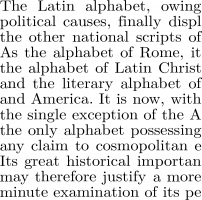

“The historical and archaeological records tell us a great deal about political history and contacts of different kinds with different places-trade and slavery, for example-but those records provide limited information about the genetic makeup of the population,” said Jonathan Pritchard, PhD, a professor of genetics and biology at Stanford University, and one of the paper’s senior authors. Rome presented an ideal opportunity to use the same DNA analysis techniques to fill in ancestral details left out of the historical record. To help provide some new insights into the genetic makeup of the region’s population “throughout the trajectory of the empire,” they turned to modern genetic techniques, which over the last decade or so have been used increasingly to study DNA sampled from ancient skeletons. Given its historical importance, the Roman empire has been studied extensively, but far less is known about the genetic lineages of Rome’s inhabitants through the ages, the investigators pointed out. But even long before the rise of Imperial Rome, the region represented an important cultural crossroads between Europe and the Mediterranean. Rome remained unrivaled in Europe until the industrial revolution nearly 1,500 years later. At the Empire’s center was Rome, the first city to reach more than one million residents in the ancient world. “Rome controlled territory on three continents, spanning the entirety of the Mediterranean-or Mare Nostrum, ‘our sea,’ as the Romans called it.”Īt its zenith the ancient Roman Empire spanned three continents, and tens of millions of people across Europe, the Near East, and North Africa. But in less than 1,000 years Rome grew into the largest urban center of the ancient world.

Go back to the 8th century before the common era (BCE), and Rome was one of many city-states on the Italian Peninsula, the authors wrote. “This study shows how dynamic the past really is,” said Hannah Moots, a graduate student in anthropology at Stanford University, who is co-lead author of the published paper, which is reported in Science, and titled, “ Ancient Rome: A genetic crossroads of Europe and the Mediterranean.” Moots added, “In Rome we’re seeing people come from all over, in ways that correspond with historical political events.” The study was headed by the Stanford University team in collaboration with the University of Vienna and Sapienza University of Rome. They reveal a dynamic population history from the Mesolithic era (~10,000 BCE) into modern times, which spans the rise and fall of the Roman Empire. Results from the research present possibly the most detailed analysis to date of genetic variability in the region. An international research team now reports on data from a genetic study suggesting that, just as all roads may once have led to Rome, in ancient times, a great many European genetic lineages also converged in the ancient city.

Ancient Rome was the capital city of an empire that encompassed some 70 million inhabitants.


 0 kommentar(er)
0 kommentar(er)
